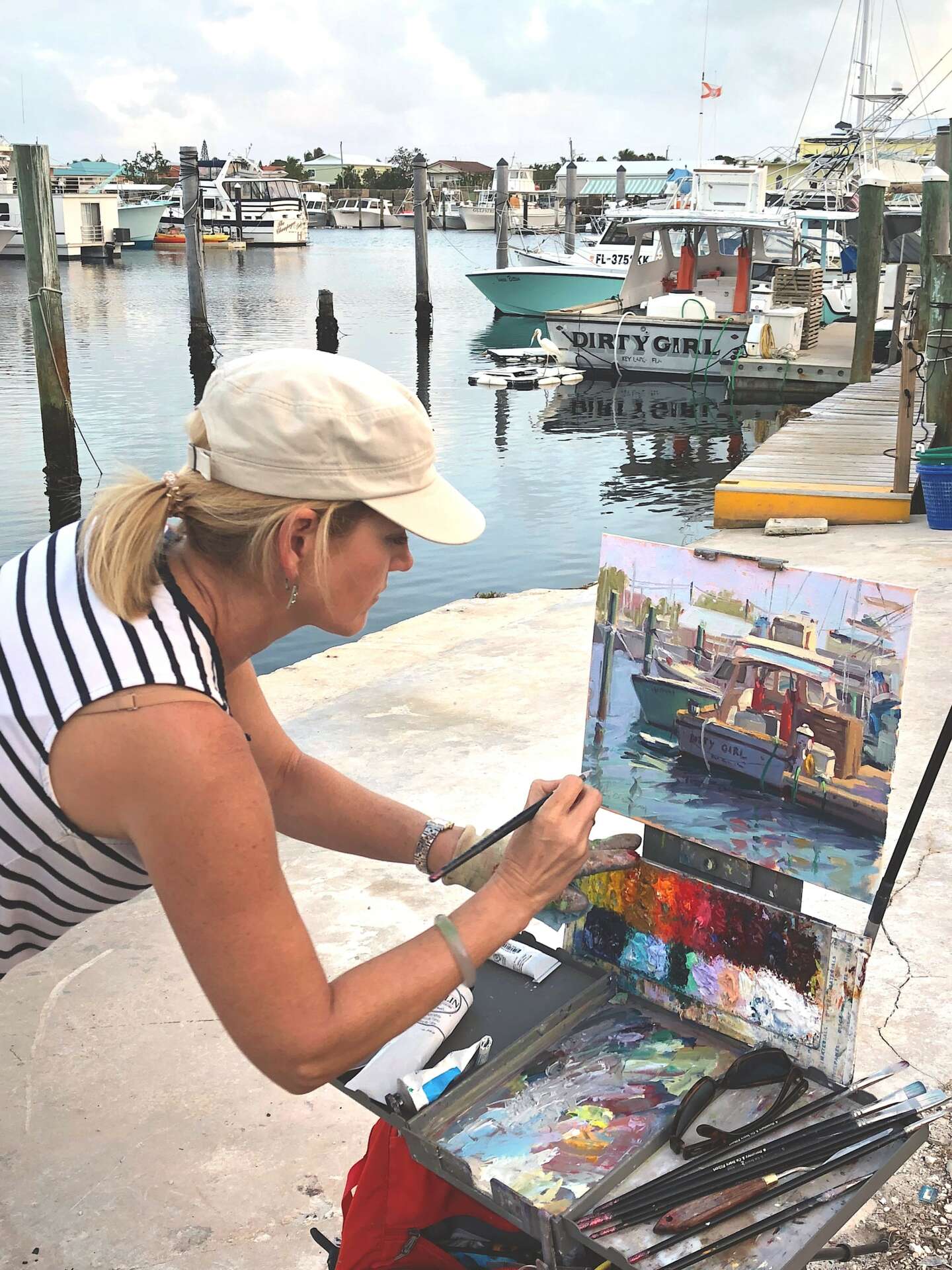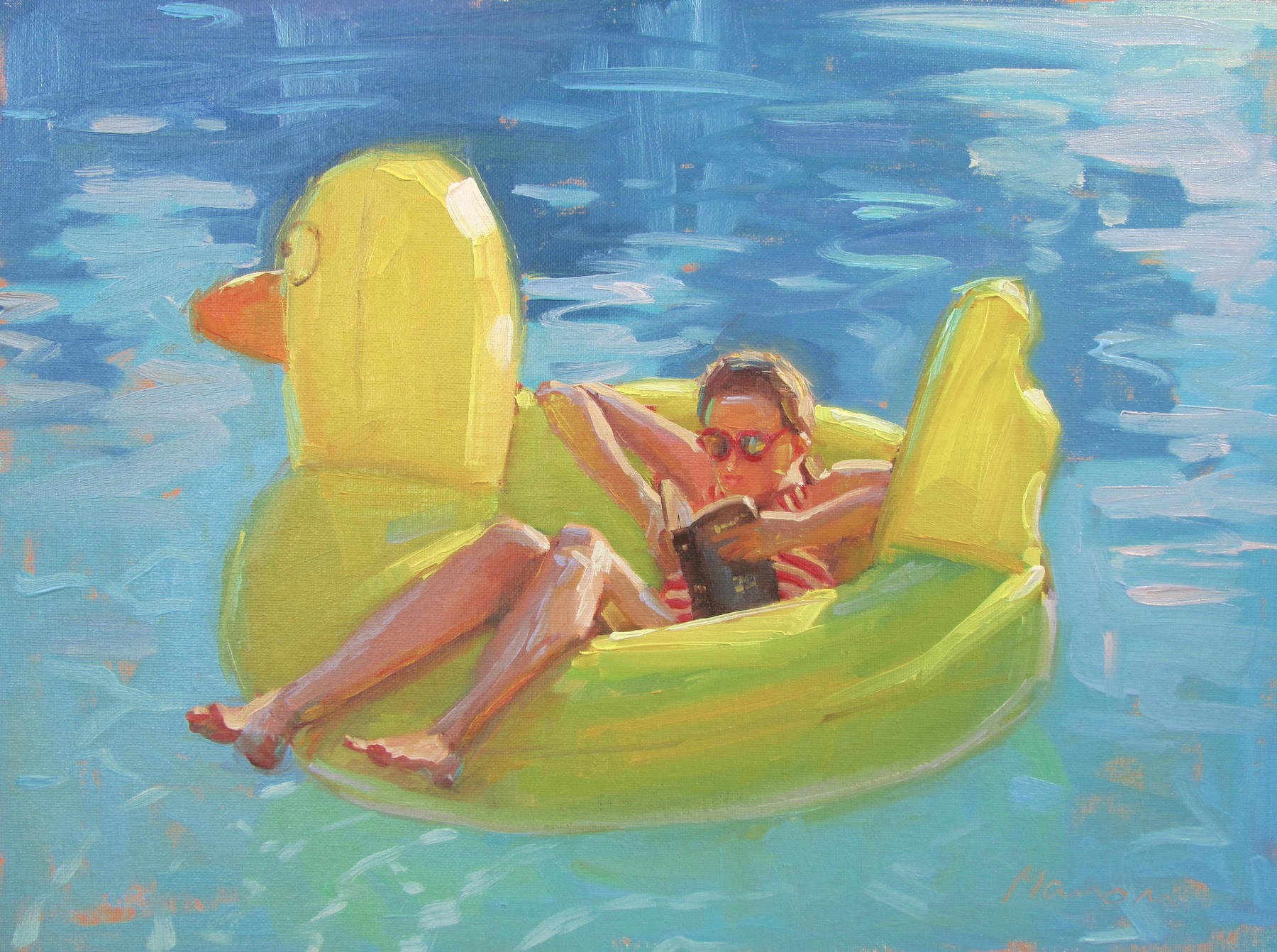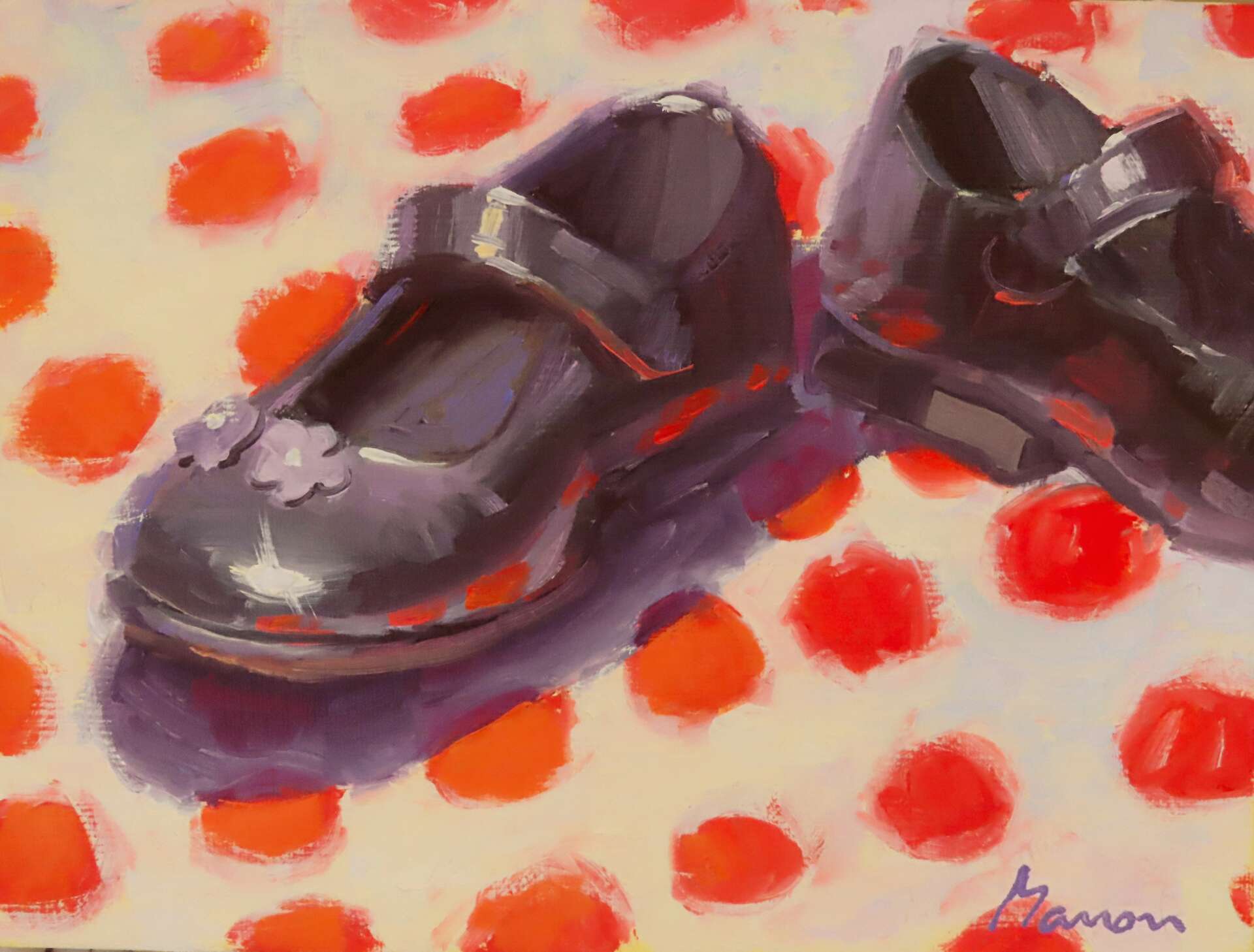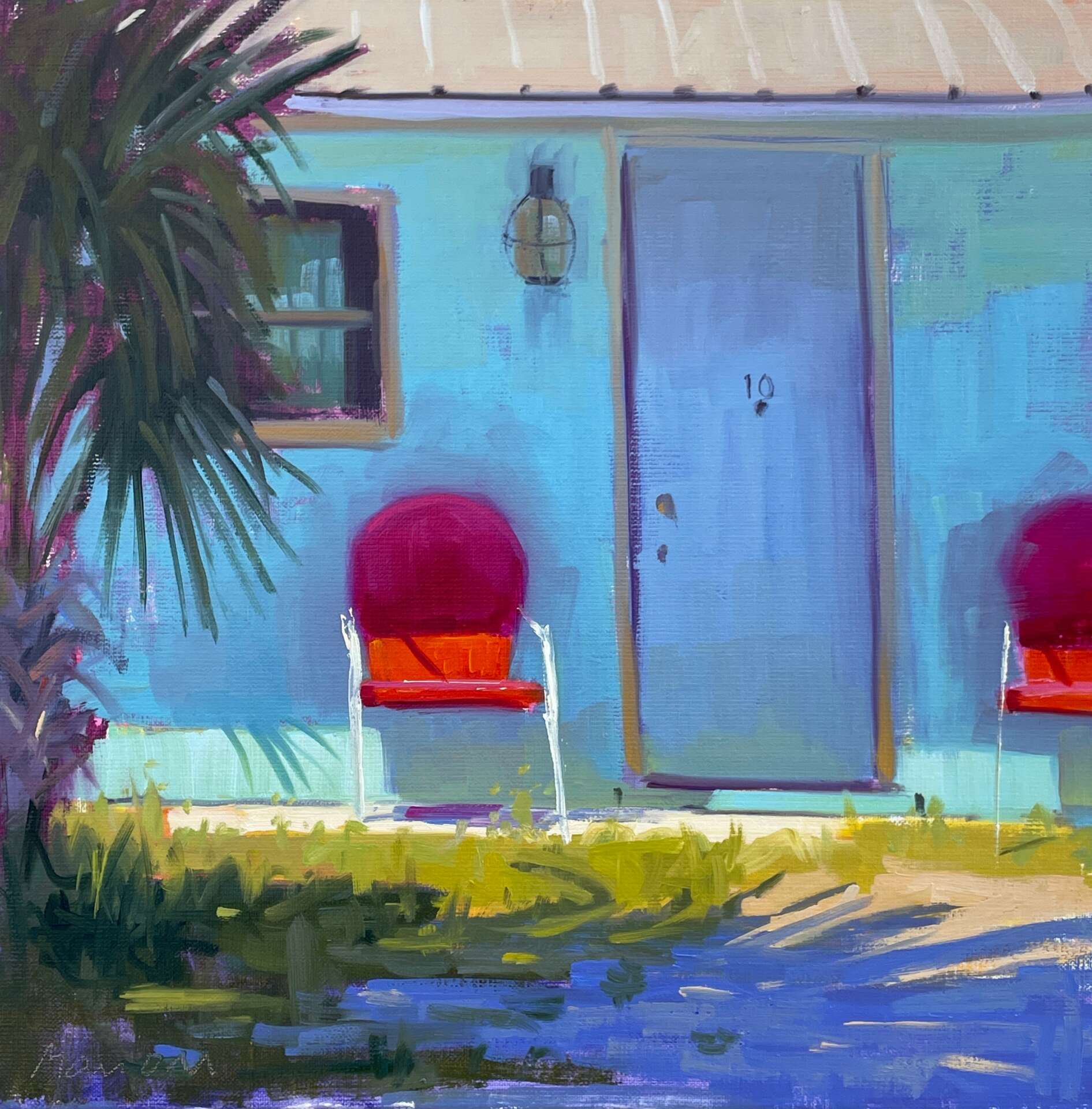We recently connected with Manon Sander and have shared our conversation below.
Alright, Manon thanks for taking the time to share your stories and insights with us today. Did you always know you wanted to pursue a creative or artistic career? When did you first know?
It has always been a dream of mine to pursue a career that would at the same time provide the creative outlet I always crave while reaping financial rewards. My path wasn’t a straight forward one, though. I started a career in finance first, but found out pretty soon that it didn’t feel good to suppress the need to express myself creatively. After moving to the US from Germany, I used that natural pause in my finance career to start a mural painting business that I ran successfully for 11 years. The big light bulb moment, however, came when I admired a painting in a gallery in Carmel and this voice in my head told me that I needed to become a professional artist. It was a total epiphany, and I decided to go with that gut feeling that this was what I want to be doing for the rest of my life. I threw myself into learning how to paint in oil, studied with many respectable artists, the first one being the one whose painting I admired so much. His name was Ken Auster. He managed with his kind and expertly teaching to stoke the fire in me that to this day burns incredibly strong.


Awesome – so before we get into the rest of our questions, can you briefly introduce yourself to our readers.
I’m in the business of making people feel that happiness is within their reach by showing through my art that small and ordinary things can be so beautiful, depending on if and how you look at them, or by making them visible in the first place by capturing them on canvas with my paints and brushes. The works I create are often landscapes or still lifes, and occasionally figures sneak into my paintings as well. I aim to convey my joie de vivre, the feeling of the day, and a sense of light, which is really what makes me want to paint a certain scene in the first place, more than the object itself. In order to see the light and the colors more accurately, I prefer to paint from life rather than from photographs, oftentimes en plein air which is just a fancy french expression, meaning that I’m painting outside. Painting en plein air is a special skill, because speed is crucial since the light changes incredibly fast, and I’m also dealing with the elements and human or animal encounters which make my job very interesting. I like to push the colors a bit to gain luminosity in my work, making it, combined with my contemporary impressionistic style, easily recognizable as mine. The high standards I have for my own work have led to representation of my work in several galleries as well as being awarded signature status with prestigious art institutions like National Oil & Acrylic Painters Society and American Society of Marine Artists, many national and international teaching assignments, and regular inclusion of my work in art publications like Fine Art Connoisseur, Plein Air Magazine, Modern Impressionist Magazine etc. I have been juried into or invited to many Plein Air events and exhibitions around the nation, continuously broadening my collector base. Those collectors frequently ask me to create commissioned pieces for them, and I love to work with them on how to combine their vision with my painting style. My first love is painting, my second love is passing my knowledge on. Painting has traditionally been passed on from person to person. You can learn a lot from books or videos, but in the end you have to put the brush to the canvas and ideally have someone giving you feedback, telling you how to improve, and so I’m proud to be part of that tradition. I have a loyal and constantly growing following of students who join my classes, workshops and retreats that I organize nationally and internationally. Especially the demand for my retreats has grown fast in recent years, as my reputation of being detail oriented, fun, and enthusiastic is casting wider and wider circles. I love how I get to connect artists through these retreats, and have seen many people go home at the end of the retreat with new friendships and a new fire burning in them to create. It’s my favorite part of my job.
For people who can’t come in person to my classes, retreats and workshops, I’m offering small group mentoring through this fantastic Canadian mentoring platform called Mastrius. It is so rewarding to watch my group grow closer to one another and emerge as better and more inspired artists who feed off of each other’s creative energy.
Ultimately, I aim to make the viewers of my art as well as participants in classes and retreats part of my joy of living, inviting them to live their lives in color, just like I do.


Can you share a story from your journey that illustrates your resilience?
I would like to share two things illustrating the resilience that anyone attempting to follow their call of being an artist should be aware of. One thing almost all the artists I know had to endure at some point in their life, including myself, is others telling you that you are not going to make it as an artist. Most of us have had an experience where, when you meet someone, let’s say at a party, you tell them you are an artist, and they respond with : “Yes, but what do you DO for a living?”
Having had a different career before switching to the arts full time, I have often wondered what would have happened had I pursued my artistic career from the get go. But I have come to the conclusion that it’s a sliding door moment. But I’m so glad that I listened to that little nagging voice, left the world of finance behind, and threw myself into painting. Don’t get me wrong, though, it took hundreds of terrible paintings, a lot of wasted paint, lots of frustration, and investing in a lot of workshops and classes before I started to being able to make money with my art without selling out my style and my vision of the world. So, when you have that burning feeling that making art is what will rock your world for the rest of your life, don’t let anyone talk you out of it, follow your heart, and be prepared to work incredibly hard.
The second thing to be aware of is dealing with rejection. You can’t make anyone love your art. They have to fall in love with it on their own. I apply to a lot of national shows, and trust me when I tell you that it stings quite a bit when you get a rejection letter. The art world is a big pond with a lot of fish, and the amount of wonderful and talented artists is mind-boggling. To win awards or to get into shows, you are at the mercy or one or just a few people, and you never know if what you painted will float their boat. The taste in art is so personal…. But to deal with rejection, I have learned not to be angry and to allow myself only a few minutes to be disappointed. Often I know the artists who did get into the show, and I’m happy for them because their work deserved to be chosen. Next time it might be my turn! I let the rejection fuel my desire to get up the next morning to paint, constantly working on improving my work. The realization that I’m not a race horse out to compete, but an artist who paints because she enjoys the process of creating and how she looks at the world also helped tremendously to make me more resilient in this highly competitive environment.


Is there something you think non-creatives will struggle to understand about your journey as a creative?
That is such a great question, and I would like to answer this not just for non-creatives but also for fledgling creatives, say art students who are about to embark on their own journey to make the arts their profession. I think that a lot of people who have not been exposed to the truth about what it takes to be a working artist who makes a living with their art successfully, have this romanticized vision of what an artist’s life looks like: Sleeping in late because we don’t have a boss to report to, wearing striped shirts, drinking red wine while working, slinging paint onto a canvas in a random way, then watch our paintings fly off the walls and into the hands of happy collectors. Well, even though I do like to wear striped shirts and drink the occasional glass of wine after hours, this is so not how this works. I have to schedule my time carefully since there are a lot of moving parts to being an artist: Some days I have studio hours to create new work where I won’t even answer the phone because I need to focus. Other times I have office days to take care of correspondence with people seeking commissions and with my students, updating my website, planning and organizing new workshops, classes and retreats, staying in touch with collectors via newsletter and blog, dealing with my galleries, social media, framing, shipping paintings, scouring the internet for opportunities, preparing for class, ordering supplies, photographing and cataloging my work, applying for exhibitions, taking care of the logistics for plein air events I have to fly or drive to, making travel arrangements. It can be a bit overwhelming at times, but that’s when it’s time to take a couple of deep breaths, maybe connect with nature and go for a walk, and reflect on why I’m doing this in the first place: I was born an artist.


Contact Info:
- Website: www.ManonSander.com
- Instagram: @ManonSander
- Facebook: @Manon Sander
- Youtube: @manonsander9576


